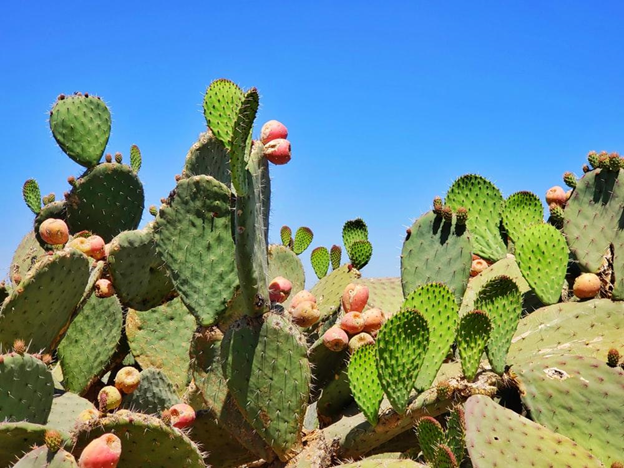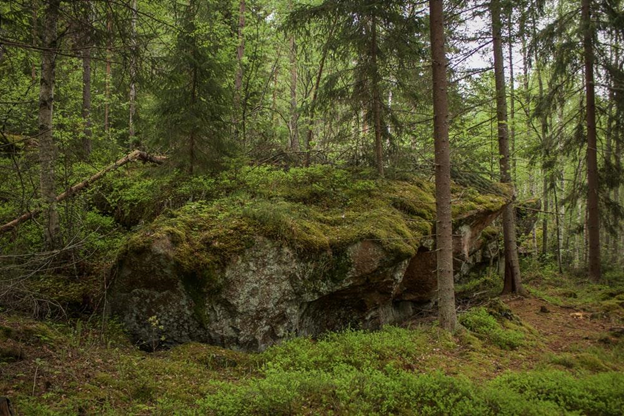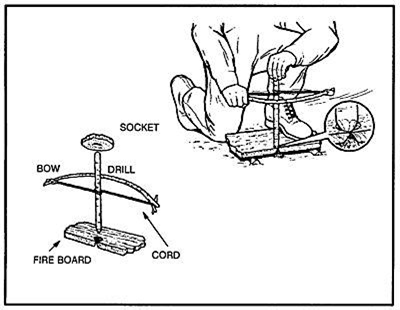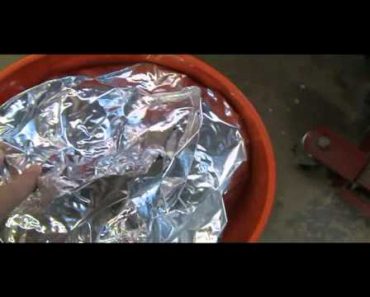Are you an adventurer who likes spending time in nature?
Whether you like hiking, camping, spending time in the woods, or going on safaris in the desert, each activity carries danger with it. You can’t predict if something will happen but what you can do is to be prepared.
Preparedness is half of the job. Knowing what you need to focus on in such situations, what you always need to carry, and what you need to do can save your life. What’s also important is that it can save the lives of your companions as well.
3 Second SEAL Test Will Tell You If You’ll Survive A SHTF Situation
Now, all of you fellow wilderness lovers,
read the following tips carefully and you’ll be good to go on the next
adventure without any fear.
1. Look for Water
One of the main necessities for survival is water. Without it, you won’t stand a chance. Did you know that you can only live 3 days without any water? That’s how important water is.
Even if you have had some water reserves
you are bound to run out of them and then you’ll be left with nothing. That is
why you need to know how to look for water and where you can find it. Here are
a few tactics for collecting water that you can apply:
- Collect
dew with your shirt. Use your
shirt to collect dew by pressing it onto the ground. Then wring the shirt and
drink the dew directly or pour it into the water bottle. - Drag a
piece of cloth through the woods.
Tie it to your leg and keep walking through the woods. The dew from the plants
will be absorbed by the cloth. - Let
the ants guide you. When you
come across a train of ants going up the tree there is probably a water source
there. Look for a crotch in the tree where they are going in, and put a piece
of clothing in there to collect water. You can also look into the holes of
decaying or dead trees. - Go parallel
to the mountain. When there is
a mountain there is usually a stream there somewhere. Just walk parallel to the
mountain and you will come across a source of water. - Dig in
the dry stream or river beds.
The water should be below the surface. The best place to dig is on the outside
edge. - Look
under the rocks. Rocks slow
down the evaporation process so there might be some dew left under them. Just
before the dawn is the perfect time to turn over every rock you find and
collect moisture with a cloth. - Eat
cactus fruit. If you find
yourself in the dessert look for prickly pear cactus pads or barrel cactus
fruit. They are safe to eat and contain lots of water that your body will
desperately need.
2. Boil the Water
If there is a river, lake, pond, or a
stream you will have a source of water. But the water you will find there is
dirty and needs to be sterilized. For this, you’ll need a metal container that
you can put onto the fire and let the water boil. The water needs to be boiled
for at least 20 minutes.
“I
have learned from a young age that steady water sources aren’t clean enough for
us to drink from. That’s why we shouldn’t drink directly from them. If you
don’t have a water filter on you, find a way to sterilize water,” said
Jason DuBois, a digital marketer at BeGraded and passionate adventurer.
Even though using a metal container is the
easiest option, there is another solution. You can make a boiling pit. Here is
what you need to do:
- Dig a hole next to your campfire (length and width approximately 2 feet (0.61 m) and depth approximately 2 feet (0.61 m))
- Separate the soil and the clay (clay is reddish and sticky)
- Put the clay all around the hole so there are no cracks in the layer of clay
- Use any form of a container (even a hat or a shoe will do) to transport water from the water source to the pit. Fill in the hole completely with water.
- Heat rocks by using the campfire. They should be heated for around 10 minutes and then you should put them in the pit. Mix the hottest rocks with the ones that have cooled down to have a steady boil.
3. Make a Shelter
A survival shelter will keep you warm,
safe, and dry. If you find yourself in the wild, one of the first things you
must do is to set up a shelter.
You’ll need to find a large surface that
will block the wind and keep you hidden from wild animals. It can be a fallen
tree or rock outcropping. First, inspect that some animals aren’t already
inhabited there.
Collect longer and bigger branches
(possibly 6 feet (1.8 m) long and 2 inches (5.1 cm) wide) and lean them against
the rock or the fallen tree. The shelter doesn’t have to be big. The only
important thing is that you can fit your body inside, even if you have to curl
up.
Use smaller branches to fill in the gaps
between big branches. No matter how close you put the big branches, the gaps
will be there. Use the debris and leaves to cover the entire shelter.
Put dry leaves or pine needles on the
shelter’s ground. You don’t want to sleep on the damp soil. Keep in mind that
you should replace the leaves from the ground each day.
If you are in the desert, dig out the hole
in the ground and cover it with clothing to keep you out of the sun.
The hole in the ground can also serve as a
shelter in areas where there are no trees or branches. Cover the hole with
sticks if you are in the colder climate. Lying in the ground will keep your
body warm. Put leaves, dirt, and debris around you to preserve your body’s
warmth.
4. Find Food
You’ll need your strength in the wild and
for that, you need to find edible food. Unless you are an extremely skilled
hunter, the chances of you catching a wild animal are less than zero. That’s
why you need to focus on other options.
Let’s start with the grossest food choice – bugs. Eating bugs can sound disgusting but the fact is that they are very nutritious. Medical News Today shared, “Insects are considered highly nutritional. The majority of them are rich in protein, healthy fats, iron, and calcium, and low in carbohydrates.” They also added that the authors of the FAO report claim that insects are as nutritious as commonly consumed meats like beef.
In the wilderness, you can find many
different plants but they aren’t all safe to eat. Berries, leaves, edible inner
bark can all serve as food. However, you should educate yourself about what you
should and shouldn’t eat.
Have a sharp stick with you when you roam
around. Use it to catch small mammals like squirrels, rabbits, and similar.
However, don’t depend solely on your hunting skills.
Try to have your meals in the evening. The
reason why is that when the body metabolizes food it creates heat. In that way,
your body will exude extra warmth when it gets the coldest.
5. Start a Fire
A fire can help you in more than one way.
It keeps the wild animals away, it allows you to cook food, and it keeps you
warm. Starting a fire without a lighter or matches is challenging but it isn’t
impossible.
There are many different methods of
starting a fire but we’ll introduce the easiest and most probable one – the bow
drill method.
“I tried out various tactics for lighting a fire but I have to admit that I failed consistently. It’s harder than it looks like, trust me. The only way that worked for me is the bow drill method, so if you’re gonna try something out, opt for that one,” said Matthew Willis, a researcher and content writer at WriteScout.
Start by building a fire pit. The
dimensions should be similar to the water pit for boiling water. It is relevant
that you have a deeper hole so that the wind doesn’t ruin your plans.
Pile up some dry sticks or pine needles in
the pit and surround the pit with rocks.
The next assignment is to make a bow drill.
Look for a rock or hardwood that has a divot. Then, look for softwood and put a
hole in it by using a sharp rock.
For the bow-like piece, find a green branch
that is sturdy. If it has a slight curve like a bow that would be perfect. Tie
the ends of this stick with a shoelace.
Put the softwood in the fire pit along with
the drill. The string of the bow should be wrapped around it with a single
loop. The bow should be parallel to the ground.
Lastly, firmly hold the softwood with a
foot and securely position the top of the drill in the divot. The drill should
spin as you draw the bow back and forth. Consequently, it should create
friction on the softwood which will lead to a spark.
Bonus Tip: Always Carry Around Survival Necessities
These tips are based on a situation where
you don’t have any survival kit or equipment with you. However, it is highly
advised that you always travel prepared.
It doesn’t matter if you are just going for
a short walk alone in the woods, or you and your family are going for a drive
in the desert. You should always carry some essentials with you. There are some
items that can save your life if you find yourself in the middle of nowhere.
What you must carry on any trip is:
- A sharp knife
- Metal container
- Water bottle
- Rain jacket
- Contact whistle
- Flashlight
- A lighter or matches
- A tinder kit
- Wool mittens or work gloves
- A Blanket
- Dehydrated food and nuts
You can add many other things on this list
but these are the very basics that you should never leave your house without.
If you travel by car, keep all of these items in your car all the time.
Otherwise, put them in a backpack and carry that with you.
If you want to have any chance of surviving in the wild with nothing, this is what you need to know. Information such as this can be of crucial importance in saving your life. Hopefully, you have read these tips carefully before you head into a new adventure.






























